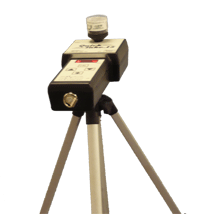Mold & Bacteria Consulting Services (MBS) provides indoor air quality testing in Toronto, Ontario for homes, condominiums, offices, hospitals, schools and other workplace environments.
Why is Air Quality Testing in Toronto Important?
The purpose of indoor air quality testing for mold is to determine if the building occupants are exposed to excessively high levels of mold spores. Mold is recognized as one of the major causes of poor indoor air quality and can have a great effect on your health. It is estimated that on average we spend 90% of our everyday life indoors and hence the quality of the air we breathe is very important. Generally, the air quality indoors can be 6 to 10 times more contaminated with airborne mold spores than the outdoor air in some homes and workplaces. Airborne mold spores are not visible to the naked eye and most of the times are odorless. That means we inhale these spores all the time without knowing. Health risks depend on the amount of mold present in the air, the types of mold, the length of exposure and individuals sensitivity to mold. A mold inspection that include air testing can help determine whether the indoor air quality has been compromised by mold growth.
Where is mold likely to grow?
Mold can grow on any surface of organic material that is wet or damp for a prolonged period of time. It can grow in places like damp basements, attics, on damp walls, ceiling tiles, bathrooms, windowsills, kitchen and on damp household items.
Indoor Air Quality Testing in Toronto
Indoor air quality testing involve collecting air samples from affected areas using special air sampling equipment. We identify the mold spore types present and their concentrations in the air. After performing indoor air quality testing we provide you with a detailed report on the findings of our tests and recommendations on how you can improve the indoor air quality of your home or office. If you are a resident of Toronto and suspect your home or workplace has a mold problem we can help you resolve the problem. As a third party, we can help you ensure the mold removal and clean-up of the mold contaminated areas is done properly.
Indoor Air Quality Testing In Former Grow Op House
You want to buy or move into a house you suspect may have been a marijuana grow operation? For your peace of mind, call us to test the air quality today.
